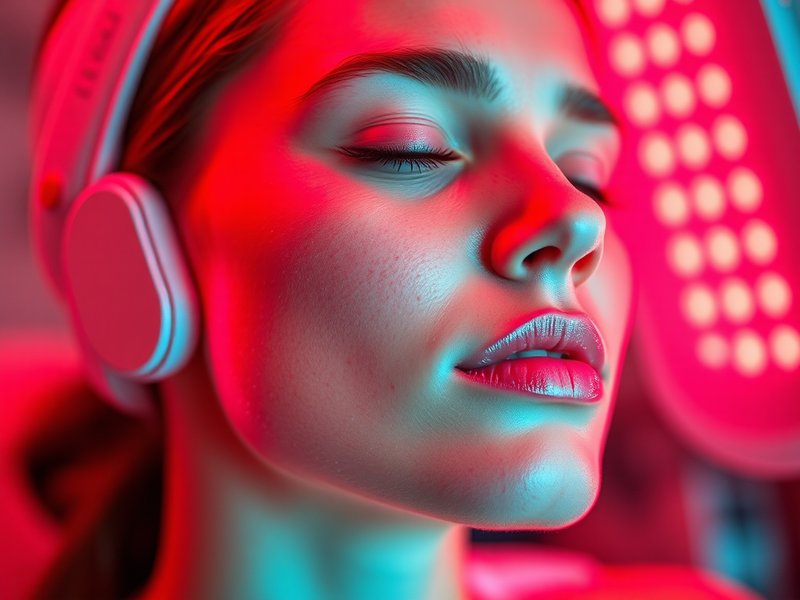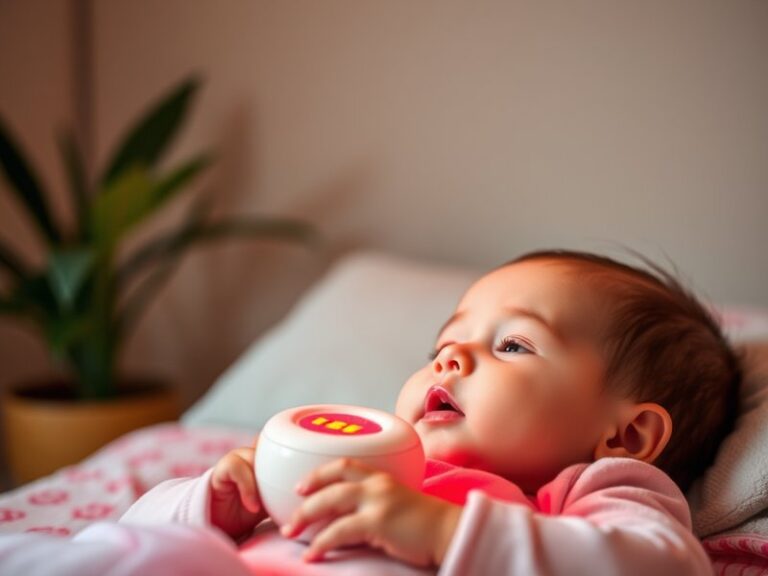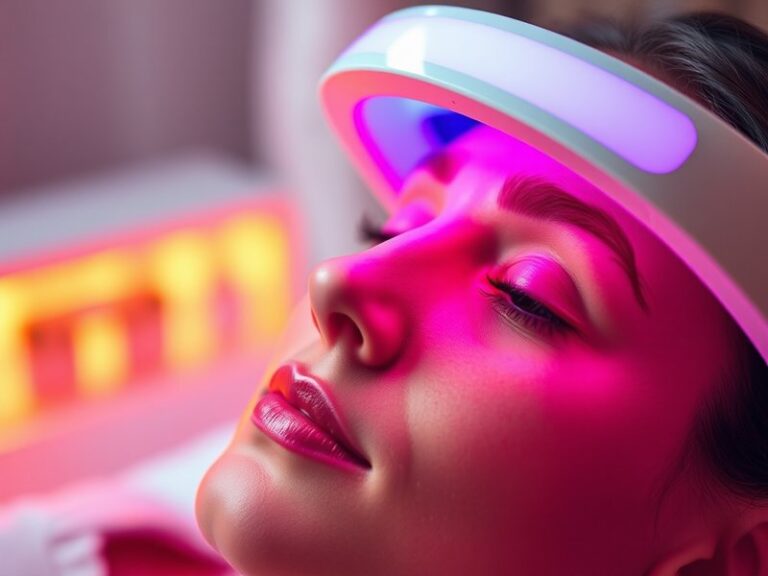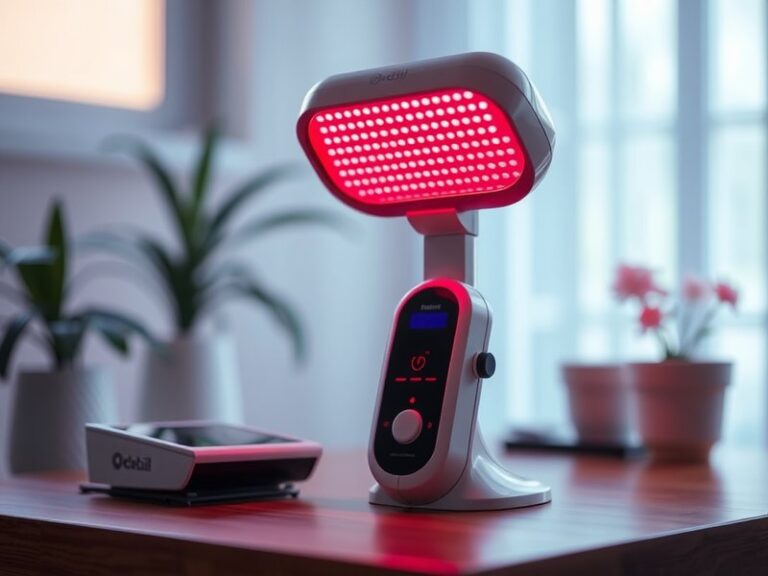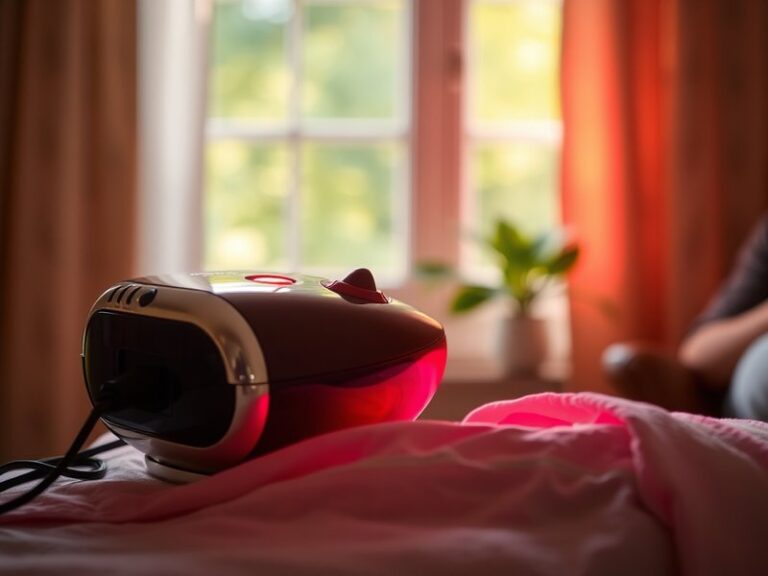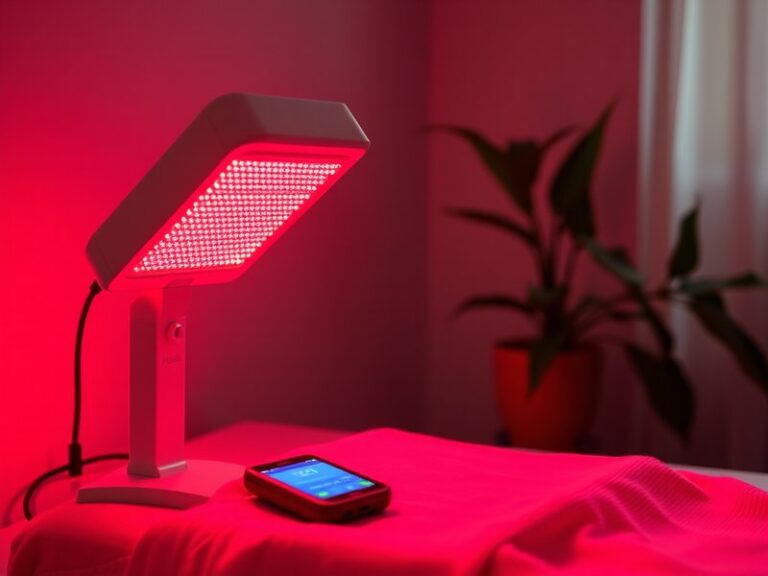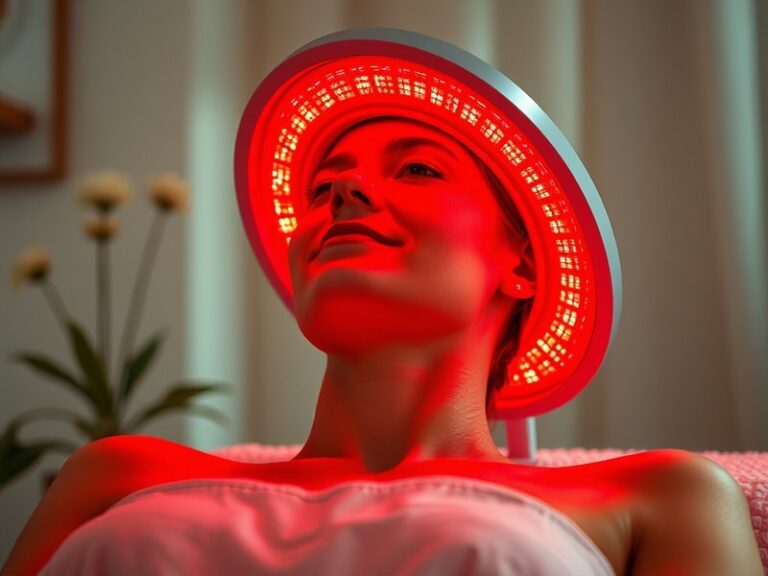Can Red Light Therapy Make Acne Worse?
Can Red Light Therapy Make Acne Worse?
Is red light therapy a miracle cure for acne, or could it potentially aggravate the condition?
This article explores the relationship between red light therapy and acne treatment. We’ll examine what red light therapy is, its potential benefits, the concerns related to acne, and practical considerations for those contemplating its use. By the end of this read, you will have a well-rounded understanding of whether this therapy could be beneficial or harmful for acne sufferers.
Key Takeaways
- Red light therapy can promote skin healing, but it may not be suitable for everyone, especially those with certain skin types.
- While some users experience improvements, others have reported worsening acne or increased inflammation.
- It’s essential to consult with a dermatologist before starting red light therapy, particularly for acne treatment.
What is Red Light Therapy?
Red light therapy (RLT) is a type of low-level light therapy that employs red and near-infrared light to promote healing and reduce inflammation in various tissues, including skin.
The therapy is believed to work at a cellular level, stimulating mitochondrial activity, which enhances ATP (adenosine triphosphate) production—essential for energy transfer within cells. This boost can improve cellular function and regeneration, making RLT a popular alternative treatment for skin conditions, including acne.
RLT devices can be found in skincare clinics, and there are also home-use devices available, offering flexibility for different users. While it’s often praised for improving skin tone, texture, and healing processes, it’s crucial to understand its limitations, especially for those prone to acne.
What are the Benefits of Red Light Therapy?
Red light therapy has several potential advantages, particularly in the realm of skin health.
Cell Regeneration
RLT promotes cellular repair and rejuvenation. This could, in theory, lead to improved skin healing and reduction in scar formation, which is often a concern for acne sufferers.
Reduction in Inflammation
Many users report a decrease in redness and inflammation in the skin following RLT treatments. This benefit could be appealing for individuals experiencing inflamed acne lesions.
Enhanced Collagen Production
Another significant advantage is the stimulation of collagen production. Increased collagen can help improve skin elasticity and reduce the appearance of acne scars over time.
Additional Considerations
RLT also has potential benefits in alleviating pain and promoting overall skin health, contributing to a more balanced complexion.
Is it Possible to Make Acne Worse with Red Light Therapy?
While many individuals seek out red light therapy for its skin benefits, there is a possibility that it may exacerbate acne for some users.
Certain factors related to skin type, pre-existing conditions, and individual reactions to light therapy can influence the treatment’s outcomes. For example, individuals with oily skin types may experience increased sebum production after using RLT, potentially leading to more clogged pores and consequently, more acne.
What are the Advantages of Considering Potential Risks?
Understanding the potential risks can help set realistic expectations and enable better decision-making regarding skin treatments.
What are the Disadvantages of Ignoring Potential Risks?
By ignoring these risks, users may experience setbacks in their acne management pursuits, leading to frustration and potentially worsening skin conditions.
What are the Things to Consider Before Trying Red Light Therapy?
Before embarking on red light therapy for acne treatment, several important factors warrant consideration.
Check out our breakdown Red Light Therapy
Skin Type
Understanding your skin type is crucial. Oily and acne-prone skin may react differently to RLT compared to dry or normal skin, so assessing how your skin typically behaves is essential.
Existing Skin Conditions
If you have additional skin conditions like rosacea or eczema, RLT could potentially aggravate these issues, making professional consultation vital.
See the comprehensive guide Safe Frequency of Red Light Therapy
Device Quality
Not all RLT devices are created equal. The wavelength, intensity, and design of the device matter significantly in determining its effectiveness and safety. Ensuring that you choose a reputable product or treatment facility is essential.
Additional Considerations
It’s wise to factor in potential costs, time commitment for treatments, and the availability of certifications or reviews for any device or clinic you plan to use.
What are the Alternatives to Red Light Therapy?
There are various treatments and therapies available for acne sufferers, aside from RLT.
Topical Treatments
Various topical treatments, including benzoyl peroxide, salicylic acid, and retinoids, are valued for their effectiveness in treating acne.
Chemical Peels
Chemical peels can exfoliate the skin and promote turnover, thereby helping to clear clogged pores and improve skin texture.
Laser Treatments
Different types of laser therapies, such as pulsed dye lasers or fractional lasers, target acne by reducing inflammation and promoting skin tightening.
Additional Alternatives
Other alternatives include lifestyle changes, such as dietary adjustments, proper skincare routines, and hormonal treatments, all of which can significantly impact acne management.
Conclusion: Is it Recommended to Try Red Light Therapy for Acne?
Red light therapy presents a promising option for improving skin health, but it may not be suitable for everyone, particularly those with specific skin concerns. While it offers benefits such as reduced inflammation and enhanced healing, it also carries the risk of exacerbating acne for certain individuals. Conducting thorough research and consulting with a dermatologist before starting RLT is essential to ensure it aligns with your unique skin needs.
Frequently Asked Questions
Can everyone use red light therapy for acne?
Not everyone may benefit from RLT for acne treatment. Individuals with specific skin types or conditions should consult a dermatologist to determine if it’s appropriate.
How often should I use red light therapy to see results?
Typically, users might see results after several weeks of consistent use, but frequency will depend on individual skin conditions and treatment protocols.
What should I do if my acne worsens after RLT?
If you notice an increase in acne or irritation after starting RLT, it’s advisable to stop the therapy and consult with a dermatologist to reassess your treatment plan.
Are there any side effects associated with red light therapy?
Generally, red light therapy is well tolerated, but some users might experience temporary redness or irritation in the treated area.
Can red light therapy help with acne scars?
Yes, in many cases, red light therapy can assist in improving the appearance of acne scars by promoting collagen production and skin healing. However, results vary from person to person.
